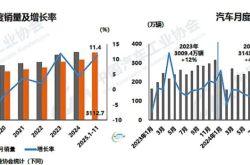2025: The Quest for Digital "Jokers" - Content Redefines Decision-Making, AI Transforms Usage Habits
![]() 02/12 2025
02/12 2025
![]() 589
589

Each wave of innovation on the internet heralds a revolution in search. In 1998, Google disrupted Yahoo's manual directory with PageRank, establishing search engines as the information hub of the PC era. As the primary entry point for user needs, search naturally becomes the forefront of technological evolution.
The rise of social search has been a frequent topic of discussion over the past year. Media reports indicate that Xiaohongshu reached 600 million daily searches in the fourth quarter of 2024. While platforms like Douyin, Kuaishou, and Bilibili also boast active search portals due to their highly engaged user bases, Xiaohongshu stands out for emphasizing its search functionality. Additionally, the "TikTok Refugee" incident earlier this year further fueled its traffic growth.
However, the rapid evolution of the internet landscape suggests that what appears to be an endpoint might just be the beginning. As Xiaohongshu increasingly dominates decision-making search scenarios with its millions of daily "real-life experience" notes, AI search has surpassed expectations. Two years after its launch, ChatGPT boasts 600 million monthly active users and fully unveiled its search function at the end of last year. Leveraging advanced language models and real-time web crawling, AI search star Perplexity has impressed with its precision.
The current search ecosystem is an exploration of deconstruction and reshaping by three parallel forces. Traditional search, represented by Baidu and Google, excels in real-time information indexing but is intertwined with an advertising-driven business model. Social search, exemplified by Xiaohongshu, builds an information database through UGC content, leveraging user engagement to challenge traditional search dominance, yet it faces limitations in vertical category coverage and commercialization pressure. AI search, driven by the popularity of DeepSeek, has made significant technical advancements but confronts challenges in answer interpretability, data compliance, and profit models.
Technological advancements are evident, but user choice remains the hidden force. As technological paths diverge, there may no longer be a singular "search"; instead, there will be "answer engines" tailored to different scenarios. As user needs shift from "information acquisition" to "decision support," the traditional search's information intermediary model must adapt.
The interactive nature of search may transcend "where to find it" to become "who defines the answer."
01. Quick Access vs. Immersive Consumption
To learn about the 2025 Spring Festival movie season, one inputs keywords into a search engine, and real-time aggregated results including synopses, box office records, and reviews appear. This comprehensiveness and timeliness form a robust barrier for traditional search engines, especially in scenarios like breaking news, stock market quotes, and live sports events.
Distributed crawler and hot indexing technologies enable real-time monitoring and capture of news sources, but UGC-style content platforms pose a challenge to traditional search engines' content ecosystems. As mentioned in previous articles analyzing search and marketing, the rise of social media and content platforms has fundamentally altered how users acquire information.
According to QuestMobile data, the deduplicated active user base of typical new media platforms (Douyin, Kuaishou, Xiaohongshu, Bilibili, Weibo) reached 1.071 billion in October 2024, with an 85.7% penetration rate across the entire network. In terms of daily usage duration, Xiaohongshu exceeds one hour, while Douyin and Kuaishou approach two hours.
Both traditional and social search boast abundant information sources, with the critical differentiation lying in user behavior and resulting engagement duration.

For instance, younger generations prefer scenario-based expressions, adding emotional symbols or practical details to keyword matching. Phrases like "commuting outfits" and "slimming combinations" are more common than just "women's clothing," and "restaurant recommendations" can be refined into scenarios like "sit-around tea sessions" or concepts like "special forces eating and drinking."
Behavioral generational gaps generate more long-tail keywords, somewhat misaligned with traditional search engines' target indexing logic but well-covered by UGC output on content platforms (e.g., Xiaohongshu's "real-life experience" notes).
Moreover, social search returns information closer to the decision-making link in the consumption chain. Traditional search scenarios often involve "quick in, quick out" news browsing, with users swiftly leaving after breaking news peaks. Advertisers increasingly hesitate to pay high prices for "instant attention," shifting commercial value.
Higher monetization efficiency attracts PUGC output, enriching content libraries and amplifying the information advantage of built-in search. The perception of "the search battlefield shifting to content platforms" persists but faces obstacles, such as balancing commercial value without eroding content quality.
For example, Douyin's 2022 test showed that displaying over 8% e-commerce content significantly negatively impacted main site user retention and engagement duration. Whoever can convert answers into commercial value without destroying trust will gain the upper hand.
Another real-time, globally impactful variable is AI potentially rewriting search rules. Some AI search tools already offer real-time internet connectivity, covering time-sensitive needs, gradually shortening traditional search's advantageous window period. The technology's disruptive potential prompts both search forms to consider incorporating AI logic into their transformations.
02. AI Search: Revolution or Enhancement?
Market analysis firm Gartner predicted in February last year that by 2026, traditional search engines' search volume will decrease by 25%, with their market share taken by AI chatbots and other virtual assistants.
Currently, "New Position" believes that market applications involving AI search concepts can be broadly categorized into standalone applications and embedded tools. Some enterprises pursue both strategies.
Standalone applications highlight AI as their core, aiming to provide a search method fully reconstructed from bottom to top, influencing the interactive experience. Typical domestic products include Kimi, Doubao, Mitata, etc., most offering dialogue memory and information source indexing. Depending on their positioning, some focus on providing multi-scenario intelligent agents as "ChatBots," while others emphasize professionalism, dedicated to enhancing model capabilities.
For regular search needs, these applications and traditional search engines each have strengths and weaknesses. AI's significant feature is shortening the entire information chain, directly presenting structured natural language, reducing time cost and cognitive burden. However, for vague searches or assessing information sources, traditional search engines still prevail.
Standalone applications' value lies more in functions traditional applications lack, such as tabulation, charting, long text processing, and personalized interaction. However, we believe embedding AI to supplement existing search modes may currently be more feasible than replacing them. Firstly, standalone applications require users to change search habits, incurring high migration costs. Secondly, AI search's "uninterrupted answers" are incompatible with the advertising bidding ranking business model, with unclear monetization prospects.

Embedded tools integrate AI functions into existing search engines or platforms, leveraging original entry points and relying on existing search ecosystems, reducing user education costs. The platform can also call endogenous data to optimize generation results.
Embedding AI has become a "trendy" proposal for product upgrades over the past two years, with examples like Alipay's ZhiXiaoBao and 360's Nano AI Search. Xiaohongshu, mentioned earlier, exemplifies a dual strategy, launching in-app AI search assistants Sousoushu and Da Vinci, followed by the standalone AI search app Diandian at the end of last year.
However, these businesses are rooted in their original content ecosystems, aiming to use AI for incremental growth. As promoted by Diandian, by aggregating life experiences across the network, it finds and summarizes answers to food, shopping, travel, etc., related questions for users.
The idea of "supplementing" or "transforming" has the advantage of not completely revolutionizing the search method. It can still rely on the traffic monetization business model, allowing users to experience AI-enhanced features. However, due to user adaptability and resource investment considerations, technological iteration under this approach may be relatively conservative.
Undeniably, AI's upper limit continues to surpass our imagination, akin to DeepSeek's cognitive impact earlier this year. However, in search, a smooth transition remains mainstream, giving both traditional and social search opportunities to surpass with technology, differing in who better translates market and user needs.
03. Conclusion
Currently, the three search forces are in a "transitional" commercialization phase: the old model is waning, and new rules are yet to be established.
Amidst a shortened window for timeliness advantages, traditional search engines need the most transformative overhaul. Social search must balance the content ecosystem and ad density to stably meet broader user needs. Independent AI search applications are still in a high-cost phase, and it remains to be seen if existing subscription models or API fees can support large-scale profitability.
The influx of users will accelerate these explorations. By 2024, 230 million people in China had used generative AI products, accounting for 16.4% of the total internet user population. Early 2025 also saw DeepSeek driving AI tool popularization, with usage habits shaping product forms and interactive feedback driving technological upgrades. While social platforms previously offered a "more emotional" search experience, AI, a rational product, still needs to determine its final form based on extensive user feedback.
However, we can agree that the ultimate search form must resonate with business logic and technological paths. The first player to find this resonant frequency will define the next decade.
*The lead image and images in the text are sourced from the internet.





